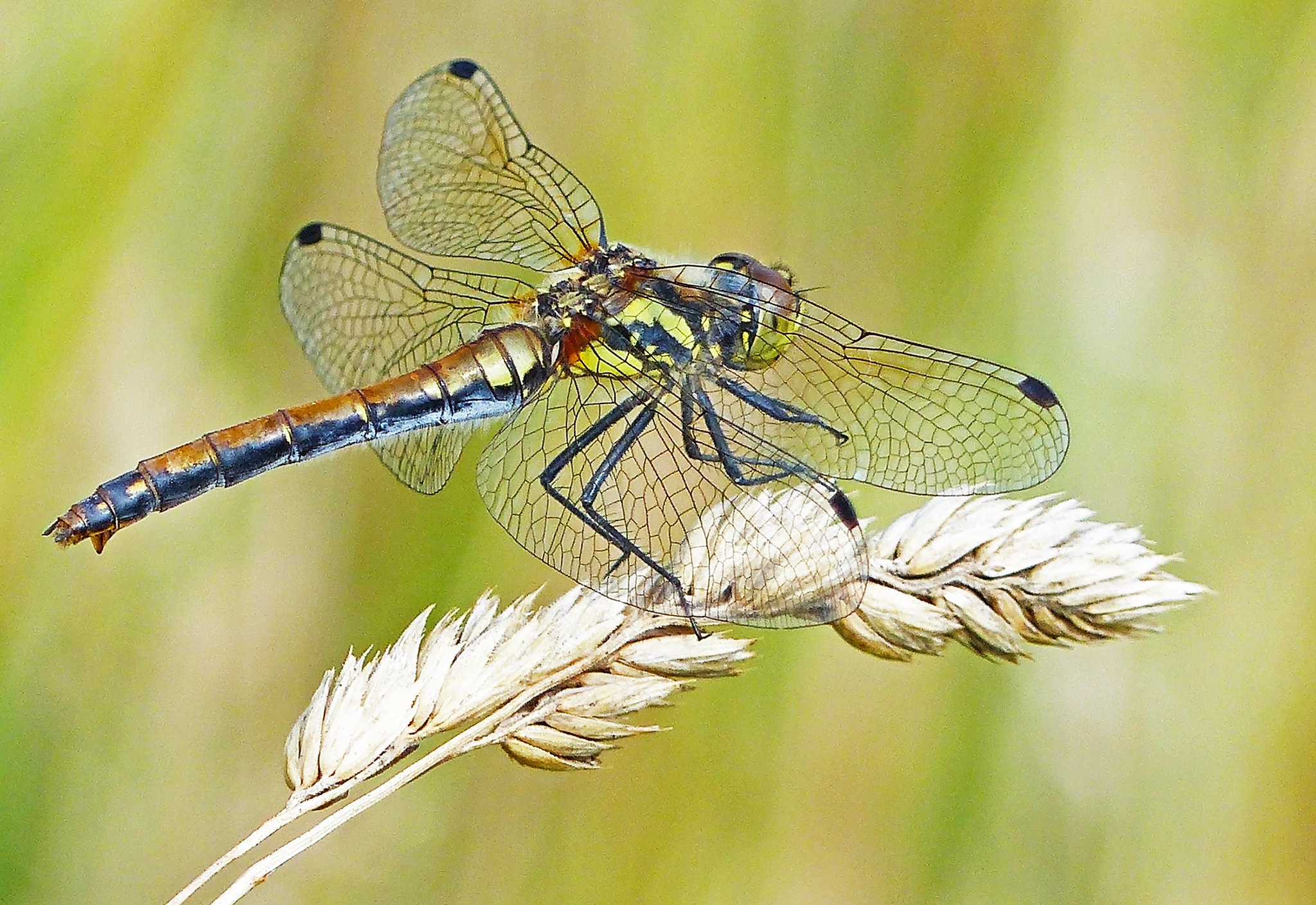Days of Dragonflies, Fireflies and Fly Fishing
Posted on Categories Discover Magazine

It’s the season for emergences, whether you’re a dragonfly, firefly, periodical cicada or fly fishing enthusiast! The warm weather brings a variety of citizen science opportunities, some of them fleeting, so we hope you can get outdoors and experience the wonders of nature with your friends and family, and help document them for the many researchers trying to understand and preserve them.
Dragonfly Swarm
A female blue dasher dragonfly (Pachydiplax longipennis) gazes out at her blog-reading audience (Credit: ksblack99, public domain via Flickr Creative Commons)
Dragonflies rarely pass up an opportunity to party, so there’s a good chance you’ll see them out munching mosquitoes and sipping dew drops on National Dragonfly Day, June 8th! Also, they are not known for moderation, and will likely continue to congregate throughout the summer. So be sure to join Dragonfly Swarm and report their swarming activity, so that researchers can learn more about their behaviors and distribution.
Firefly Atlas
A big dipper firefly (Photinus pyralis) flashes his butt to impress a potential mate (Credit: Terry Priest
CC BY-SA 2.0 DEED Attribution-ShareAlike 2.0 Generic, https://flic.kr/p/obMdwj)
For a male firefly, attempting to mate with the wrong species is unproductive as well as embarrassing. That’s why each type of firefly has its own unique flash color and/or pattern. These unique colors and patterns are flickering out in many places, due to habitat loss and climate change. If you’re lucky enough to live in firefly habitat, consider joining Firefly Atlas! Submit your firefly observations to help project scientists monitor populations of these extraordinary insects.
Cicada Safari
Two periodical cicadas chat amiably after a long day of singing (Credit: Bob Hirshon)
There are over 3000 species of cicadas in the world, but only the seven in the genus Magicicada are “periodical.” That means they live underground for either 13 or 17 years before emerging in swarms so enormous and noisy that they overwhelm predators, as well as many people and their befuddled pets. This year, two broods are emerging, one centered in northern Illinois and the other across a large, adjacent swath stretching down to Alabama and Georgia. Join Cicada Safari to report on this rare double emergence!
Save the Waves
You can document coastal threats while you hang ten with the Save the Waves mobile app (Credit: Papa Pic, public domain, via Flickr Creative Commons)
Heading for the beach? Why not download the Save the Waves app before you go, so you can document environmental threats, like marine debris, coastal erosion, sewage runoff and many more. Your data will help partner organizations deal with coastal threats.
MyCatch
By reporting your catch using the MyCatch mobile app, you’ll help monitor and protect freshwater fish (Credit: ChattOconeeNF, public domain via Flickr Creative Commons)
If you love freshwater fishing, consider downloading MyCatch, a mobile app that lets you log the fish you catch in your personal fishing journal and also shares the information to the Angler’s Atlas. That helps conservation biologists monitor and protect fish populations, without revealing your special fishing spots to others.
TrophyCatch
Help protect freshwater fish and possibly win a prize when you report your large bass catch to TrophyCatch (Credit: Florida Memory, public domain via Flickr Creative Commons)
In TrophyCatch, it’s all about the bass! If you fish in Florida waters and catch a bass weighing 8 lbs or more, send photos and other documentation to the Florida Fish and Wildlife Commission (FWC). You’ll be eligible for prizes and, even better, you’ll help Florida FWC biologists manage bass fisheries.